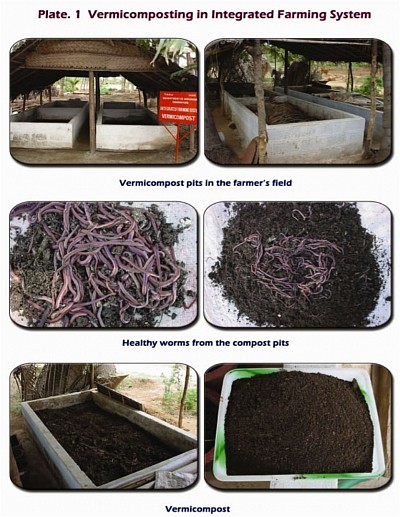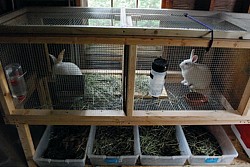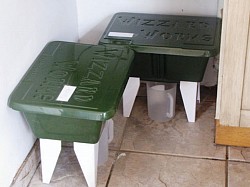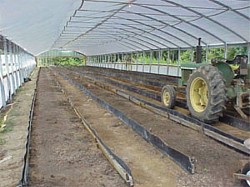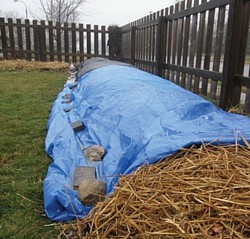Organic Vermicompost
Organic Vermicompost is a nutrient-rich soil amendment made from the earthworm process of breaking down organic waste, offering benefits such as improved soil structure, increased water retention, and a rich source of nutrients and beneficial microbes. Key details include its 100% organic nature, its variety of packaging forms like powder or granules, and its availability in different sizes from 1 kg to 50 kg bags. Common uses are as a fertilizer for home gardens, potting mixes, and larger-scale agriculture, providing a sustainable alternative to chemical fertilizers.
What is Organic Vermicompost?Definition: It's the dark, crumbly, nutrient-rich substance produced by earthworms as they consume organic waste.
Organic Nature: Vermicompost is 100% organic and free from artificial chemicals, enhancing plant immunity and promoting healthy soil.
Benefits for Soil and PlantsImproved Soil Structure: Worm castings loosen the soil, increasing aeration and creating space for root development. Enhanced Water Retention: It improves the soil's capacity to hold water, leading to better hydration for plants. Nutrient-Rich: Vermicompost contains high amounts of essential nutrients and trace elements that are beneficial for plant growth.
Increased Microbial Activity: It introduces beneficial microbes that boost the soil's fertility and help keep plants healthy. Disease Resistance: The beneficial compounds in vermicompost can help suppress plant diseases and improve overall plant immunity.
Forms and Packaging Form: It is available in powder and granular forms.Packaging: You can find it in various sizes, including small packets, 1 kg, 5 kg, 10 kg, and larger bags up to 50 kg or more.
ApplicationsHome Gardening: Ideal for indoor plants, terrace gardens, balcony pots, and lawns.
Agriculture: Used in farming to improve soil health and increase crop yields. Soil Amendment: It can be mixed directly into the soil or applied as a top layer to boost plant vitality.
Key Features Slow-Release Fertilizer: It provides a slow and steady supply of nutrients to plants.
Neutral Odor: Its natural production process results in a neutral odor, making it suitable for home use. Sustainable: It is an eco-friendly and cost-effective option for improving soil quality.
This Fact Sheet is for people interested in making compost with worms – whether they intend to do it under the kitchen sink or on a two-acre worm farm. Vermiculture (raising earthworms) and Vermicomposting (making compost with worms) have their own special vocabulary. This Fact Sheet helps explain some of those words. It also shows how vermicomposting is different from traditional, or microbial, composting. Some people will tell you vermicomposting is harder than traditional composting, but most will also agree the challenges of vermicomposting pays off with superior compost. Vermicomposting is not the same as raising worms to sell as bait. Composting worms are small and live in groups of several worms. Composting worms are much easier to grow than baitworms, and can still be used for fishing. It is a little harder to put a small composting worm on a hook, though.
The scientific name for the most commonly used composting worm is Eisenia fetida. In everyday language, worms belonging to the species Eisenia fetida are called red wigglers. Be careful, though—many other worm species are called red wigglers, and some of these, such as Lumbricus rubellus and Asian species in the Amynthas genus, are damaging invasive pests. A more accurate name for Eisenia fetida is tiger worm or red tiger worm. The name comes from the distinctive dark and light colored banding that is unique to Eisenia fetida. For a more in depth look at the life and habits of composting worms, see OSU Factsheet, BAE-1529, “The Biology and Ecology of Composting Worms (Eisenia fetida).
Vermicomposting versus Microbial Composting
Vermicomposting is similar to traditional composting. Both use natural processes to stabilize organic matter (Figure 1). Traditional composting relies on fungi and microorganisms to stabilize organic matter; therefore, it is sometimes called microbial composting. Worms do most of the composting in vermicomposting. Both microbial and worm composting are aerobic processes – they require oxygen (O2) to function. One advantage of vermicomposting is you do not need to aerate or turn a vermicompost pile. The worms do the turning for you. Excess energy is given off as heat in microbial composting (Figure 1). In vermicomposting, most of this energy is tied up in worm biomass. In fact, the last thing you want is a vermicompost pile to heat up. Composting worms hate heat. If they can, red wigglers will escape from hot compost piles. If they cannot escape, they usually die. Few things smell worse than dead tiger worms.
Types of Vermicomposting Systems
No matter how large or small, vermicomposting piles are contained in three basic types of systems: bins, beds and windrows.
Worm Bins are completely above ground, and they come in all shapes and sizes (Figures ). Small bins are relatively portable (Figure 4). Being above ground makes it easy to remove worms and vermicompost from bins. The downside of bins is they can change temperature rapidly. You may need to insulate, cool or heat bins to keep the worms happy year round.
Worm beds are long troughs dug or placed into the soil (Figure 5). Because soil temperature stays fairly constant, beds solve the problem of worms getting too hot or too cold. Beds put worms in their natural habitat – the earth. The problem with worm beds is digging is required to remove worms or compost.
Worm Windrows are a compromise. Windrows are long mounds sitting on top of the ground (Figure 6). Being fairly large, windrows resist sudden changes in temperature. And because they are above ground, windrows allow easy access for worm and compost removal.
The main disadvantage of windrows is their size. You are not likely to set a worm windrow up in your kitchen. If you want to get into worm farming in a big way though, a windrow may be the system for you.


